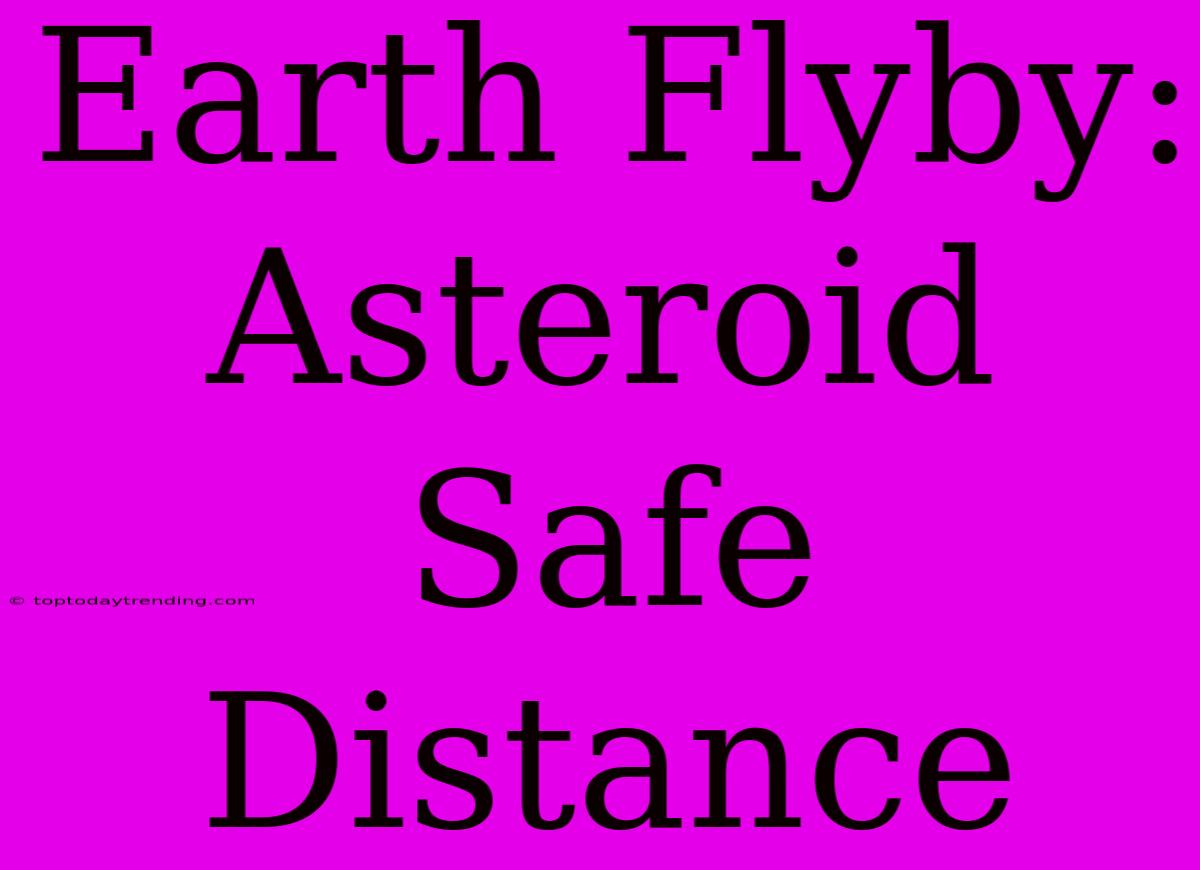Earth Flyby: Asteroid Safe Distance
The vastness of space is filled with celestial bodies, including countless asteroids. While most asteroids orbit the sun without posing any threat to Earth, some come dangerously close to our planet, prompting concerns about potential impacts.
What is an Asteroid Flyby?
An asteroid flyby occurs when an asteroid passes close to Earth, but without colliding with it. These flybys can range from incredibly distant events to near misses, with some asteroids coming closer than the moon.
Determining Safe Distance
Determining a safe distance for an asteroid flyby is a complex process that involves several factors, including:
- Asteroid Size: Larger asteroids pose a greater risk than smaller ones.
- Speed: The faster an asteroid is moving, the more energy it carries, potentially causing more significant damage upon impact.
- Trajectory: The path of the asteroid relative to Earth is crucial. Even a close flyby can be dangerous if the asteroid's trajectory is aligned with Earth's orbit.
- Impact Probability: Scientists use sophisticated calculations and observations to assess the likelihood of an asteroid colliding with Earth.
How Close is Too Close?
A safe distance is generally considered anything that keeps an asteroid outside of Earth's atmosphere. However, the term "safe distance" can be relative depending on the size and speed of the asteroid.
- Close Flybys: Asteroids that come closer than the moon are considered close flybys. While these events are generally considered safe, they are still monitored closely.
- Potentially Hazardous Asteroids: Asteroids that come within 0.05 AU (astronomical units) of Earth and are larger than 140 meters in diameter are classified as potentially hazardous.
Why are Flybys Important?
Studying asteroid flybys provides valuable insights into:
- Asteroid Composition: By observing the light reflected from asteroids, scientists can learn about their composition, size, and shape.
- Solar System Formation: Asteroids are remnants from the early solar system, and their study helps us understand the processes that led to the formation of planets.
- Potential Threats: Tracking asteroid flybys helps us identify potentially hazardous objects and develop strategies to mitigate the risk of an impact.
Monitoring and Mitigation
Various organizations worldwide are dedicated to monitoring asteroids and developing strategies for mitigating potential threats. These efforts involve:
- Telescope Networks: Observing asteroids and tracking their orbits through telescopes around the world.
- Space Missions: Sending spacecraft to asteroids for close-up observations and even sample collection.
- Deflection Technologies: Developing techniques to alter the trajectory of asteroids that pose a threat to Earth.
Conclusion
While asteroid flybys can be exciting events, they also serve as reminders of the potential dangers lurking in space. By constantly monitoring and studying these celestial bodies, we can better understand and mitigate the risks they pose to our planet.

